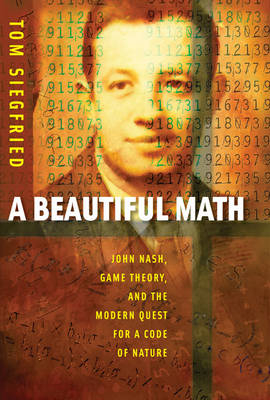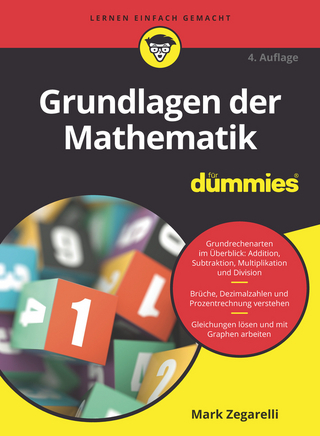
A Beautiful Math
Joseph Henry Press (Verlag)
978-0-309-10192-9 (ISBN)
- Titel ist leider vergriffen;
keine Neuauflage - Artikel merken
Millions have seen the movie and thousands have read the book but few have fully appreciated the mathematics developed by John Nash's beautiful mind. Today Nash's beautiful math has become a universal language for research in the social sciences and has infiltrated the realms of evolutionary biology, neuroscience, and even quantum physics. John Nash won the 1994 Nobel Prize in economics for pioneering research published in the 1950s on a new branch of mathematics known as game theory. At the time of Nash's early work, game theory was briefly popular among some mathematicians and Cold War analysts. But it remained obscure until the 1970s when evolutionary biologists began applying it to their work. In the 1980s economists began to embrace game theory. Since then it has found an ever expanding repertoire of applications among a wide range of scientific disciplines. Today neuroscientists peer into game players' brains, anthropologists play games with people from primitive cultures, biologists use games to explain the evolution of human language, and mathematicians exploit games to better understand social networks. A common thread connecting much of this research is its relevance to the ancient quest for a science of human social behavior, or a Code of Nature, in the spirit of the fictional science of psychohistory described in the famous Foundation novels by the late Isaac Asimov. In A Beautiful Math, acclaimed science writer Tom Siegfried describes how game theory links the life sciences, social sciences, and physical sciences in a way that may bring Asimov's dream closer to reality.
Table of Contents
Front Matter
Introduction
1 Smith’s Hand--Searching for the Code of Nature
2 Von Neumann’s Games--Game theory’s origins
3 Nash’s Equilibrium--Game theory’s foundation
4 Smith’s Strategies--Evolution, altruism, and cooperation
5 Freud’s Dream--Games and the brain
6 Seldon’s Solution--Game theory, culture, and human nature
7 Quetelet’s Statistics and Maxwell’s Molecules--Statistics and society, statistics and physics
8 Bacon’s Links--Networks, society, and games
9 Asimov’s Vision--Psychohistory, or sociophysics?
10 Meyer’s Penny--Quantum fun and games
11 Pascal’s Wager--Games, probability, information, and ignorance
Epilogue
Appendix--Calculating a Nash Equilibrium
Further Reading
Notes
Index
Tom Siegfried
1 Front Matter; 2 Introduction; 3 1 Smith's Hand--Searching for the Code of Nature; 4 2 Von Neumann's Games--Game theory's origins; 5 3 Nash's Equilibrium--Game theory's foundation; 6 4 Smith's Strategies--Evolution, altruism, and cooperation; 7 5 Freud's Dream--Games and the brain; 8 6 Seldon's Solution--Game theory, culture, and human nature; 9 7 Quetelet's Statistics and Maxwell's Molecules--Statistics and society, statistics and physics; 10 8 Bacon's Links--Networks, society, and games; 11 9 Asimov's Vision--Psychohistory, or sociophysics?; 12 10 Meyer's Penny--Quantum fun and games; 13 11 Pascal's Wager--Games, probability, information, and ignorance; 14 Epilogue; 15 Appendix--Calculating a Nash Equilibrium; 16 Further Reading; 17 Notes; 18 Index
| Erscheint lt. Verlag | 21.9.2006 |
|---|---|
| Verlagsort | Washington |
| Sprache | englisch |
| Maße | 152 x 229 mm |
| Themenwelt | Sachbuch/Ratgeber ► Natur / Technik |
| Mathematik / Informatik ► Mathematik ► Allgemeines / Lexika | |
| Mathematik / Informatik ► Mathematik ► Angewandte Mathematik | |
| Mathematik / Informatik ► Mathematik ► Finanz- / Wirtschaftsmathematik | |
| Mathematik / Informatik ► Mathematik ► Mathematische Spiele und Unterhaltung | |
| ISBN-10 | 0-309-10192-1 / 0309101921 |
| ISBN-13 | 978-0-309-10192-9 / 9780309101929 |
| Zustand | Neuware |
| Haben Sie eine Frage zum Produkt? |
aus dem Bereich


